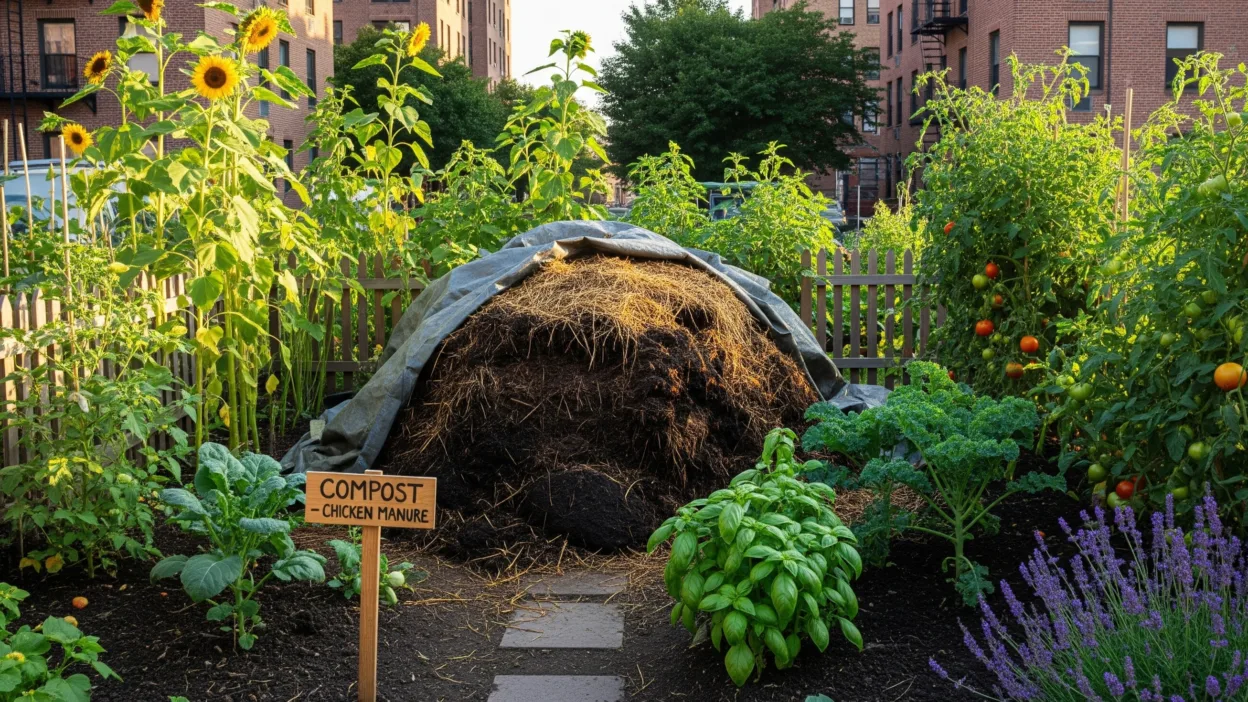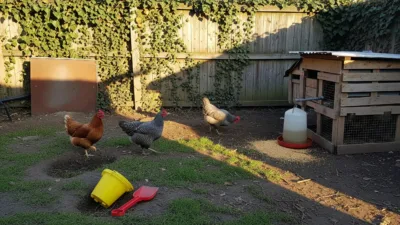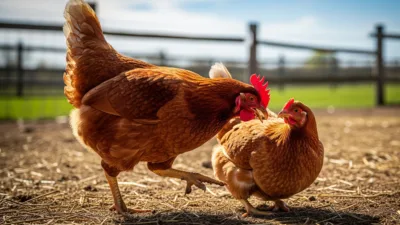Raising backyard chickens is a rewarding experience, especially for urban homesteaders. Not only do chickens provide fresh eggs, but they also produce a constant supply of manure. However, raw chicken manure cannot be used directly on plants, it’s too high in nitrogen and can burn roots. The solution is simple: composting chicken manure. Even if you live in a city with limited space, you can turn chicken waste into a nutrient-rich fertilizer for your vegetable garden or container plants.
In this guide, you’ll learn how to compost chicken manure in small city spaces, the best methods, and tips for safely using it in your garden.
Why Compost Chicken Manure Instead of Using It Raw?
Fresh chicken manure is high in nitrogen, phosphorus, and potassium, essential nutrients for plant growth. But when applied directly, it:
- Burns plants due to excess nitrogen.
- Smells strongly and can attract pests.
- Contains harmful bacteria like E. coli or Salmonella.
By composting, you:
- Neutralize harmful pathogens through heat.
- Reduce odors and make handling easier.
- Create a well-balanced fertilizer that improves soil structure.
This makes composted chicken manure safe, effective, and eco-friendly for city gardeners.
Setting Up a Chicken Manure Composting System in the City
Even with limited space, you can successfully compost chicken manure by using the right setup. Here are some practical options:
1. Compost Bins or Tumblers
- A sealed compost bin keeps odors down and prevents pests.
- A compost tumbler speeds up decomposition and is great for patios, balconies, or small backyards.
- Choose a size that fits your flock: for 4–6 hens, a 60–80-gallon tumbler is usually enough.
2. Balcony or Patio Composting
- Use stackable bins or DIY wooden boxes lined with breathable material.
- Keep the bin covered but well-ventilated to avoid smells.
3. Community Garden Composting
- If your apartment is too small, check if your local community garden allows chicken manure composting. Many welcome it as a valuable fertilizer source.
The Right Ratio: Browns and Greens
To make safe compost, you need the correct carbon-to-nitrogen balance.
- Chicken manure = Green (high nitrogen)
- Bedding material (straw, wood shavings, leaves, shredded cardboard) = Brown (high carbon)
The best mix is:
1 part chicken manure to 2–3 parts carbon-rich material.
This balance prevents smells, speeds decomposition, and ensures a well-rounded compost.
Step-by-Step Guide: Composting Chicken Manure in the City
Follow this simple process to make nutrient-rich compost without hassle:
Step 1: Collect Manure and Bedding
- Gather manure along with used bedding from your chicken coop.
- Bedding acts as the perfect carbon material to balance nitrogen.
Step 2: Layer Your Compost Bin
- Start with a layer of straw, leaves, or shredded cardboard.
- Add a layer of chicken manure mixed with bedding.
- Alternate layers until your bin is full.
Step 3: Keep the Pile Moist
- Compost should feel like a wrung-out sponge—not too dry or too wet.
- If indoors or on a balcony, mist with water occasionally.
Step 4: Turn the Pile Regularly
- Turning the compost every 1–2 weeks adds oxygen and speeds decomposition.
- Tumblers make this step much easier in small spaces.
Step 5: Monitor Temperature
- Chicken manure compost should heat up to 130–150°F (54–65°C) to kill pathogens.
- A compost thermometer helps track heat levels.
Step 6: Let It Mature
- Composting chicken manure takes 6–9 months for full safety and breakdown.
- Finished compost will be dark, crumbly, and smell earthy.
Tips for City Composting Without Smells
Smell is often a concern in city spaces, but with these tricks, you can keep your system fresh:
- Always cover fresh manure with carbon material.
- Use tightly sealed bins or tumblers to prevent odor leaks.
- Add a small amount of garden lime to balance acidity.
- Keep compost away from direct sun if in a hot climate, it slows decomposition.
How to Use Composted Chicken Manure in the City Garden
Once your compost is ready, you can enrich your small-space garden:
- Vegetable Containers – Mix compost into potting soil for tomatoes, peppers, or leafy greens.
- Raised Beds – Spread 1–2 inches of compost before planting.
- Fruit Trees or Shrubs – Apply as mulch around the base.
- Herb Gardens – Use lightly, as herbs need well-drained soil.
Avoid applying too much at once, moderation ensures plants don’t become nitrogen-heavy.
Common Mistakes to Avoid
Many new chicken keepers make errors that slow the process or make compost unsafe. Avoid these:
- Using fresh manure directly on plants – it can kill seedlings.
- Not balancing browns and greens – too much manure causes odor.
- Composting in open piles in city spaces – attracts rodents and pests.
- Skipping the curing stage – immature compost may still contain harmful bacteria.
The Benefits of Composting Chicken Manure in the City
By learning how to compost chicken manure properly, you gain:
- Sustainable gardening – turning waste into useful fertilizer.
- Healthier soil – improves water retention and microbial life.
- Higher yields – vegetables grow bigger and tastier.
- Lower costs – free fertilizer means less spending on store-bought compost.
It’s a simple, eco-friendly practice that works even in limited urban spaces.
Final Thoughts
If you keep chickens in a city backyard or small homestead, don’t let the manure go to waste. With the right composting system, you can safely turn it into rich fertilizer for your vegetables and herbs. Whether you use a compost tumbler on a balcony, a bin in your yard, or share space at a community garden, composting chicken manure is one of the most sustainable ways to grow food in urban environments.
Start today, and in just a few months, your chickens’ waste will fuel the healthiest garden you’ve ever grown.



